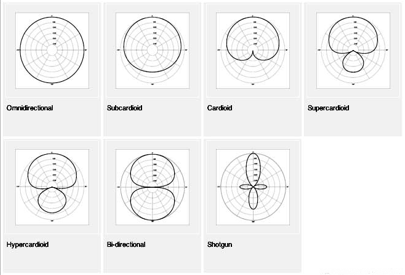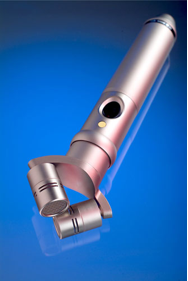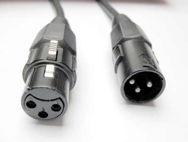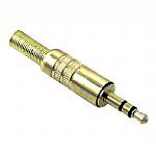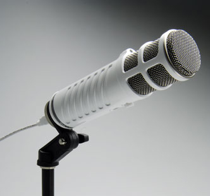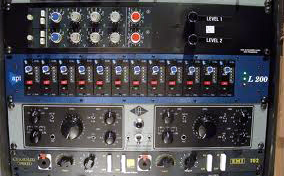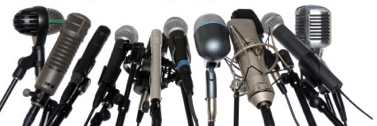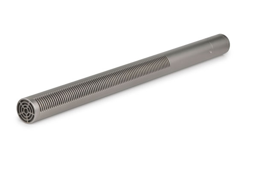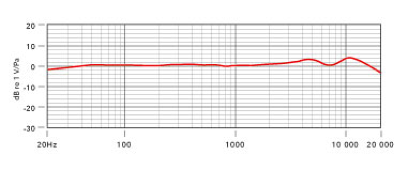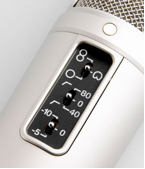
Photo 150 / 150
Farmer Thorarinn Olafsson tries to lure his horse back to the stable as a cloud of black ash looms overhead in Drangshlid 2 at Eyjafjoll April 17, 2010.
REUTERS/Ingolfur Juliusson
26. des. 2010
Pictures of the year 2010 | Reuters.com
20. des. 2010
New music by Danish trumpet player and vocalist HC Erbs – Last.fm
New music by Danish trumpet player and vocalist HC Erbs
Hello friends and music lovers.l just wanted to recommend this album here: Don't Wear It Out by HC Erbs.
HC Erbs played trumpet on the Menn Ársins album (
12 Steps to the Liquor Store &
Allt að gerast.
Don't Wear It Out is a great sounding album with melodic jazzy pop songs. Good songs and very well produced.
Check it out and I hope you like :)
PS: You can also hear me and HC play on these songs here: http://www.last.fm/music/Amalgam/Demo (free mp3 download - full previews)
17. des. 2010
16. des. 2010
Open-mindedness
A look at some of the flawed thinking that prompts people who believe in certain non-scientific concepts to advise others who don't to be more open-minded.
15. des. 2010
James Brown - Mother Popcorn (1969)
Via Christian McBride on Facebook
[Wanna know why I love James Brown so much? Just watch this video. Easily James Brown at his peak. No dancers, no special effects, no pyrotechnics, just a man and his band KILLING IT....DEAD!!]
via The Source - Top 10 Tips for Choosing a Microphone
Top 10 Tips for Choosing a Microphone
1. Which type? Condenser, dynamic, shotgun, stereo pair…?
Studio condenser mics have large diaphragms, typically 1”, for high sensitivity and a wide frequency range which is ideal for recording vocals, acoustic guitar or similar instruments. They also come with a range of different pick-up patterns: cardioid is the commonest and the pattern is heart-shaped (hence the name) so it picks up primarily from the front and sides and rejects sound from the rear, which also suits vocals and acoustic instruments where excessive sound reflections from the walls, floor and ceiling may colour the sound with an unpleasant ‘boxy’ quality.
Figure of eight pick-up pattern is like two cardioid patterns on top of one another and facing opposite sides – great for backing vocals with two people either side of the mic. Omni-directional mics pick up sound equally from all directions, and can be good for situations where you want to gather a wide sound field, for example a choir in a beautifully reverberant church, or to gather ‘room sound’ to mix in with a more directional mic nearer the actual sound source – here’s a chart of some of the most commonly encountered mic polar patterns:
Dynamic mics are less sensitive and need to be closer to the sound source but they can also handle sudden transients better in some situations and they can supply a tighter, more focused sound – ideal for mic-ing individual drums in a drum kit, or for close mic-ing guitar amplifiers. They are also less sensitive to handling noise so they’re ideal for handheld vocal use – the ubiquitous Shure SM58 is a good example of this.
Broadcast mics are similar to studio mics but are often designed to be pointed end-on to the sound and are frequently dynamic rather than condenser mics because with less sensitivity they won’t pick up so much extraneous sound from the room and will frame the source immediately in front of them.
Shotgun mics are a special type of condenser mic with an even more tightly focused pick-up pattern known as hyper-cardioid, where sound is almost entirely rejected from the sides as well as the back. They are often used in noisy situations where a single sound source needs to be isolated as much as possible from its surroundings – interviews in public arenas, nature recordings or film sets, for example.
Where a stereo recording is needed you have the choice of using a matched pair of mono mics or a dedicated stereo mic. These feature two separate capsules mounted on the same mic body and can be a lot quicker and easier than having to set up a pair of separate mics and worry about exactly which stereo configuration to use – the Rode NT4 is a great example of a ready-made X-Y Stereo mic.
(Stereo and Surround recording will be covered as separate subjects in one of the next Source Distribution Top 10 Tips series of articles).
2. The Type of connection
Mics come with a variety of different connector types so you need to make sure that the mic you buy will connect to the equipment you’re using to record. The most common connector type is the three pin XLR, the industry standard found in studios all over the world because of its ruggedness and reliability. Some mics such as certain stereo models and those intended for use with prosumer video cameras or to plug directly into PC soundcards will have a mini-jack plug like those found on inexpensive headphones. One thing to beware of here is the difference between mono and stereo mics: some mono mics will use the three-pin XLR but must be connected to a mono input (the extra pin carries an inverted copy of the sound waveform for noise rejection purposes) whereas stereo mics using a mini-jack connector must be connected to a stereo input, because the connector is carrying both channels. That being said almost any type of adaptor can usually be found if you need to connect your mic to an input with a different type of socket.
3. Power source – Phantom, battery or bus?
Condenser mics - where the actual diaphragm has a tiny electrical charge applied across it and variations in that charge under different air pressures are what the mic senses – need a power source and that power has to come from somewhere. Some let you use a battery, but as you go higher up the microphone food chain the more professional mics all tend to use ‘phantom power’ (officially 48V but often much lower) which is supplied down one of the pins in the mic’s connector (another reason for the popularity in pro circles of the three-pin XLR). If you want to use a mic that requires phantom power you need to make sure that the pre-amplifier, soundcard, mixer or other unit you’re sending the mic’s signal to supplies phantom power as part of its specification – if not, you’ll have to stick with a condenser that can use an internal battery, or with a dynamic mic.
One other option if you don’t have your own phantom power is to use a valve mic such as the Rode NTK, K2 and Classic II (where valves are used as part of the mic’s amplification system to which they impart an extra degree of warmth and character) as these have their own custom power supply for the valve itself and they also supply phantom power to the mic as part of the package.
There are also various USB mics such as the Rode Podcaster that plug directly into a Mac or PC’s USB connection and derive their operating power from there as well as transmitting the audio directly down the USB connection without any other power being needed.
4. To pre-amp or not to pre-amp
There are three basic levels of signal in audio systems: the loudest are those that drive loudspeakers; the middle one is known as line level and is the level at which audio is sent between different pieces of equipment in the studio; the lowest level is microphone level and you will always need some way of raising the very low levels produced by your microphone to line level where they can be recorded, processed and transmitted. The circuit used to do this is known as a Microphone Pre-Amplifier (‘mic pre-amp’ or even ‘mic pre’ for short). Sometimes these are incorporated into computer soundcards so that you can plug a mic directly into them, sometimes people use dedicated standalone units and where these units also include facilities to compress or limit the signal volume, or to re-balance it tonally using tone equalisation controls they are often known as Channel Strips (because they include the controls that would be found on just one strip of a full mixing desk).
How you amplify your mic signal depends on how critical the quality is and what budget and other kit you have to hand. If you’re recording for fun and you’re perfectly happy with the mic pres on your computer soundcard’s mic inputs (and these days most computer soundcards are extremely good, way beyond what was available even 5 years ago) then you’re good to go. If you feel that the quality you have onboard is less than you want (or if you have a soundcard that doesn’t have mic inputs and will only accept line level signal) then there are a huge range of units available for use as mic pres, with or without lots of bells and whistles and ranging in price from well under a hundred pounds to many thousands of pounds – we’ll be covering selection of the right Mic Pre-amp for your needs in a forthcoming Source Distribution Top 10 Tips article.
5. Size is important…
It’s not always an issue but sometimes size can be a consideration for microphone selection. The most obvious case is where you need a small mic to be out of sight on a speaker’s clothing (e.g. the new Rode Pinmic) but another common situation is where you mount a mic on top of a video camera and need to ensure that the end of it doesn’t show in the picture area: shotgun or semi-shotgun mics come in a variety of lengths so it’s worth doing some research, perhaps popping along to a retailer with the camera you intend to use to try out some different models.
And whilst larger mics with larger diaphragms produce a wider frequency response they are also more subject to differences in response due to being slightly off-axis to the mic – for example a group of four backing vocalists all round one mic will record with slightly different tonal characteristics depending on the angle at which their voices hit the mic, which is why small diaphragm condenser mics such as the Rode NT5, NT55 or NT4 which all have ½” diaphragms are often used for middle distance recordings such as choirs of orchestras, as the smaller surface area of their diaphragms gives a more even frequency response from wide angles of incidence.
6. Mountings and environments
Another area to consider is how you’re going to mount or support your mic and whether you’ll want to use it in any unusual environments or locations. Most mics will come with some kind of mic clip or holder: dynamic mics only need a simple mic clip because they’re not prone to problems with noise transmitted up the mic-stand or from handling, whereas more sensitive condenser mics heed a shock-mount, which holds the mic in a cradle of elastic suspension – if the mic doesn’t come with one of these already you can normally buy one as an accessory.
If you plan to record in unusually hot, cold, dusty or humid conditions it’s also worth checking whether this might be a problem: moisture in particular is something that condenser mics are not fond of; it can settle on the diaphragm and lead to uneven response, pops and crackles so you may be better off with a condenser mic or a mic specially designed for extreme conditions such as the Rode NTG3, which uses a technology known as RF-bias rendering it almost completely resistant to moisture, making it one of the only options in any environment where condensation is an issue.
7. Performance specs – Frequency response, self-noise, distortion, maximum SPL?
How concerned you are about the performance specifications is a very individual thing: some people pay great attention to low self-noise (i.e. the noise generated by the mic’s own internal diaphragm and associated electronics), where the benchmark is currently set by the Rode NT1A which at 6dBA is the world’s quietest mic. Others maintain that with the 144dB of dynamic range available with 24 bit recording there’s no longer any need to worry, and these days any professional microphone should be well within acceptable limits for all but the most demanding high-end applications.
Likewise frequency response (what the lowest and highest frequencies are that the mic will accurately pick-up and how that differs according to how near the mic’s main pick-up axis you stand): figures these days for any pro or semi-pro mic are usually way better than most users would need and it’s often more of an issue getting rid of high and low frequencies that you’d rather had never found their way onto the recording in the first place, particularly in the case of condenser mics.
Distortion and maximum Sound Pressure Level are closely connected – the maximum Sound Pressure Level that the mic will record before it starts to distort through over-loading is always something to be aware of, but other than in certain obvious cases (such as close mic-ing a kick drum or Noddy Holder) most modern mics will happily deal with a huge 120dB or more so that you’ll seldom be aware of any limitations.
8. Reliability & local servicing facilities
It may seem obvious but have a look at online forums and similar places to get an idea of how reliable your shortlisted mics are considered to be by end-users! With
mics as with anything else you get what you pay for: £900 will usually buy better performance and work perfectly for longer than a £90, but the level of use it’s subjected to is a big factor: one of the things that distinguishes professional from consumer equipment is that pro gear is designed to cope with a high level of use without complaint – 12 hours a day, 7 days a week for years at a time, where consumer kit which will work perfectly for many years if used for a few hours at a time might show signs of strain if subjected to such high pressures. Be realistic about your needs: there’s no point buying a tank if an SUV will do, and money saved on your mic could usefully be put towards a better soundcard or channel strip…
The availability of local repair facilities will hopefully never concern you – but if you should need to get your mic repaired or serviced then being able to do so easily and quickly within your locality can be a big advantage and the difficulties and extra costs of having to deal overseas can sometimes be considerable: money you save on a cheap ’grey import’ can quickly be lost this way.
The length or Warranty offered by a mic manufacturer can be a big plus here: Rode offer a unique 10 Year Full Warranty on all their microphones with local servicing around the world, other companies may not be so helpful.
9. Pads and filters…
Other very useful extra features that some mics offer include the ability to reduce the sensitivity of the mic to deal with widely differing sound pressure levels – this is called a pad and commonly allows reducing levels by 10 and 20 dB. If you think you might use the mic on anything from whispered vocals to a kick drum then this is well worth looking for.
Low-pass filters remove very low frequencies such as the rumble that can sometimes be transmitted up a mic stand and ruin otherwise perfect vocal takes. Several Rode mics including the NT2A, NT55 and M3 feature switchable polar patterns and pads, and some models such as the NT2000 and K2 feature continually variable patterns and pads giving even greater flexibility.
10. Accessories & extras…
Last but not least, value for money: what do the manufacturers of the microphones you’re considering throw in to sweeten the deal? Many companies bundle pop-shields, shock-mounts, cables and protective pouches with their mics at no extra cost which allows you to get up and recording straight out of the box with no need for further purchases – Rode for example do this with their NT1A Pack and NT2A Pack: a quick trip to the shops in the morning and by tea-time you could be tracking your first Number One!
John McLaughlin - Heart Of Things - Mr. D.C. Part 2 - Killer bass solo by Matt Garrison!
14. des. 2010
The Best Photos from TIME 2010 - Photo Essays - TIME
The Best Photos from TIME 2010
Volcanic Eruption in Iceland
Photographed by Ragnar Th Sigurdsson / Arctic Images
Eyjafjallajokull's eruption lights up the Icelandic sky. It was an awesome spectacle, but the ash that followed created a global mess.
6. des. 2010
Joni Mitchell: Hejira, Live in Japan with Pino Palladino on the fretless bass
I never thought I’d hear a version of Hejira without Jaco and love it. But then Pino Palladino proved me wrong with this incredible live performance of the title track to Joni’s 1976 album by the same name.
Doesn’t hurt that Wayne Shorter joins in either.
5. des. 2010
4. des. 2010
The random 15 (or 20) songs meme on Facebook

Joe Henderson – Our Thing Listening now

Billy Cobham – Sorcery 15 minutes ago 
John Zorn – Suicidal Tendency 17 minutes ago 
Los Van Van – Una Aventura Más 20 minutes ago 
The James Taylor Quartet – Grass Is Not Greener 26 minutes ago 
Christian Wallumrød Ensemble – Wedding Postponed 30 minutes ago 
Art Blakey – Yama 37 minutes ago 
Peter Herbolzheimer Rhythm Combination and Brass – WILD CHICK 42 minutes ago 
Edie Brickell & The New Bohemians – 10,000 Angels

Nick Drake – Day Is Done Listening now

Al Di Meola – Sarabande From Violin Sonata in B Minor 7 minutes ago 
Chick Corea's Akoustic Band – Morning Sprite 14 minutes ago 
David Torn – Miss Place, The Mist ... 19 minutes ago 
The Aynsley Dunbar Retaliation – Fugitive 23 minutes ago 
Thin Lizzy – Running Back 26 minutes ago 
Curtis Mayfield – Tell Me (how ya like to be loved) 33 minutes ago 
Graham Central Station – Luckiest People 37 minutes ago 
J. B. Lenoir – Alabama 40 minutes ago 
The RH Factor – Interlude 41 minutes ago
First rule - be honest!
Don't keep shuffling forward for "cooler" songs. This is a 'getting to know you' exercise.
Once you've been tagged...
(1) Turn on your MP3 player or music player on your computer.
(2) Go to SHUFFLE mode.
(3) Write down the first 15 songs that come up - title and artist. NO editing/cheating, please.
(4) When you're done... tag 15 or more friends and spread the lyrical love.
2. des. 2010
Jaco Pastorius - 2010 Hollywood FAME Posthumous
Almost 25 years after his death, Jaco Pastorius still appears on magazine covers several times per year. His absence from this earth does not diminish his memory or his influence on multiple generations of bass guitarists. This video as a rare display of his work and the diverse nature of his various styles of playing. The 2010 Hollywood F.A.M.E. are proud to present Jaco Pastorius with the Posthumous Award for Bass Guitarist.
1. des. 2010
Most intresting
Here's a slide show of my most interesting photos on flickr according to the flickr algorithm
28. nóv. 2010
Jim Black's AlasNoAxis - Maybe
Live at A Vaulx Jazz 2009, Vaulx-en-Vilen, FranceChris Speed- tenor sax, Hilmar Jensson- guitar, Skuli Sverrisson- bass, Jim Black- drums
Film by Jean Marc Birraux, Nomade Productions with participation from Mezzo
their latest cd "Houseplant" available on Winter & Winter Recordings
http://www.winterandwinter.comhttp://www.jimblack.com
http://www.myspace.com/alasnoaxismusic
26. nóv. 2010
Jaco Pastorius - Bass Solo (Live in Santa Cruz)
I've heard many. But I hadn't heard this one until now! :)
21. nóv. 2010
The Space In Between - Janek Gwizdala - @JanekGwizdala digital download on @Bandcamp

I'm so used to bands and artist having the "pay what you like" option available, that I was thinking about what I would like to pay for the album. I was thinking $14 ... then I didn't get the option :-p .... oh well, I guess I could buy it again then :)
17. nóv. 2010
The Musician’s Social Media Food Pyramid | DIY Musician
The Musician’s Social Media Food Pyramid
November 10, 2010{ 8 Comments }Posted by Ariel Hyatt – Tuesday, 9 November, 2010
It happens to me all of the time when I teach artists social media. The face goes blank, the frustration begins to settle in and then the artist says it:
“I just don’t have anything interesting to say.”
REALLY?
I’m shocked by this every time. You are an artist; you do things we mere mortals are totally enamored by: you PLAY MUSIC, you write songs, you perform them in public!
So PHLEEASE, do not tell me you have nothing interesting to say. I ain’t buying it.
All you are missing is a System for Social Media Success.
Luckily, unlike sheer god-given musical talent, social media is a learnable skill.
As I was teaching my system to a client in my kitchen a few weeks ago over coffee and bagels and it HIT me… and so I created:
THE MUSICIAN’S SOCIAL MEDIA FOOD PYRAMID!
Remember that chart they brought out when we were in 2nd grade to show us how to eat well-rounded meals? I have re-tooled it for you so you can now participate on Social Media healthily! And you won’t even have to think about it – just follow along…You wouldn’t eat only bagels all of the time. They are a treat once in awhile, but they are not healthy to eat every day – and a diet of only bagels would be boring!
Most artists are only serving their audiences bagels all of the time. Plain bagels. Over an over again.
Uninteresting.
We want a burger, or a giant green healthy salad, we want some candy, give us protein!
But you keep serving bagels, bagels, bagels!
These are five things that when used in concert with one another can help you ratchet up your social media effectively and manage it easily.
Download Your Social Media Food Pyramid PDF:
GROUP 1. DIRECT ENGAGEMENT
Like: BREAD, CEREAL, RICE & PASTA
Servings (Recommended Frequency): 3 – 4 out of every 10 postsMake sure you’re in a two-way conversation with people consistently
Facebook: See something interesting something on their Facebook pages? Don’t just “like”, write a true comment about it and get more involved.
Twitter: Send messages to people or mention you are with them by using the @ sign and their username (For Example: I’m @CyberPR). Retweet (RT) comments you like by others.
Blog Reading: Create a Google profile and join communities of blog readers. Leave comments on blogs you like.
Video: Bonus! Make custom video comments or greetings with a Flip Camera; post them as comments or contributions. Subscribe to other people’s channels, and comment on their videos.
Location: Create fun spots that relate to your band/ music and check in, interact with others when you are out and about.
GROUP 2: SHINE A LIGHT ON OTHERS
Like: FRUITS & VEGETABLES
Servings (Recommended Frequency): 3 out of every 10 postsAll the best social media users know this and use it well. This takes all of the attention off of you and puts it onto others, and people will appreciate your kindness because you are recognizing them in front of new potential fans and followers and therefore helping them get known.
Quote people you like by sharing their profiles and videos on Facebook and re-post on your blog. Link to articles and interesting things that catch your attention such as videos, photos etc.
#FF (Follow Friday), #MM (Music Monday) and RT’ing on Twitter -
Reprint pieces of things that they’ve written, or link to music players. Review albums – talk about why and how those albums influenced you
by using http://www.bit.ly to track the effectiveness and to shorten your tweets.GROUP 3. CURATE CONTENT
Like: MEAT, POULTRY, FISH, BEANS, EGGS
Servings (Recommended Frequency): 2 – 3 out of every 10 postsContent may be king but content curation is queen!
The best part is you can set up an RSS reader to pull interesting content for you so you don’t have to come up with anything brilliant – just select what you like and share it. And if it’s interesting to you it’s probably interesting to your community
Ask yourself: How do I spend time online? What do I read? Are there sites I visit daily? Add them to the RSS reader (here is a brilliant Commoncraft video that will teach you how to set one up. Then all you have to do is grab the content you like and share (remember to always give credit where credit is due).
Music: Use Blip.fm, Song.ly, Jango, or LastFM to share music
Recipes: Post links to foods you like from Epicurious or TheFoodNetwork
Media: Post book reviews, music reviews or film reviews
Blogs: News, politics, celebrity gossip, parenting, fashion, art, sports – all make good topics for people to connect around
GROUP 4. A PICTURE SAYS 1,000 WORDS
Like: MILK, CHEESE & YOGURT
Servings (Recommended Frequency): 2 out of every 10 postsVisuals are extremely effective. And they mix up your strategy nicely.
Take photos using your mobile, post them directly to Facebook or to your Twitter stream.
Make a photomontage using Picasa [http://picasa.google.com], and post it on your blog.
I love Twitpic & YFrog because they are so easy to use and create instant Twitter integration.
Post videos on your custom Youtube channel, embed them on your blog and link them to your Twitter. They don’t even have to be videos that you necessarily make on your own. They can be videos of artists you sound like or play with, videos that make you laugh, or subjects that are thematic to your music and important to you like a charity.
GROUP 5. SHINING A LIGHT ON YOURSELF (AKA SELF PROMOTION)
Like: FATS OILS & SWEETS (Use Sparingly!)
Servings (Recommended Frequency): 1 out of every 10 postsOf course these are OK to do once in a while, not in an over-hypey, annoying way. Just like treating yourself to a great pastry or some fries: its OK – but not too often!
It is after all, vital to tell people if you have an album coming out, a new track, a show, or anything that’s newsworthy, noteworthy, and important for your fans and followers to know about.
Don’t forget about your specific calls to actions or these won’t be fruitful.
So – Choose from Groups 1-5 and mix it up and soon you will be fully engaging people easily and naturally, without thinking. Just like eating!
Ariel Hyatt is Author of Music Success In Nine Weeks and founder of Ariel Publicity & Cyber PR
Bloggsafn
-
▼
2010
(188)
-
▼
desember
(18)
- Pictures of the year 2010 | Reuters.com
- New music by Danish trumpet player and vocalist HC...
- Ryuichi Sakamoto - Bibo no Aozora (From "Babel" OST)
- Open-mindedness
- Skepticism is a Virtue
- James Brown - Mother Popcorn (1969)
- via The Source - Top 10 Tips for Choosing a Microp...
- John McLaughlin - Heart Of Things - Mr. D.C. Part ...
- The Best Photos from TIME 2010 - Photo Essays - TIME
- WikiRebels - The Documentary
- Richard Dawkins Plays the Piano - "Earth History i...
- WikiRebels: The Must Watch Wikileaks Documentary [...
- Joni Mitchell: Hejira, Live in Japan with Pino Pal...
- What Is Out There? - The Story of Science
- The random 15 (or 20) songs meme on Facebook
- Paxman Meets Hitchens: A Newsnight Special (1/2)
- Jaco Pastorius - 2010 Hollywood FAME Posthumous
- Most intresting
-
▼
desember
(18)
Um mig / about me

- Siggidóri
- Bass player, father, husband, band member, musician, son, brother, hobby photographer, friend, coffee drinker,

